24.06.2022
For the first time, a small rocket will launch a private spacecraft to the Moon
"It's really pushing the envelope as a commercially owned spacecraft operating at the Moon."
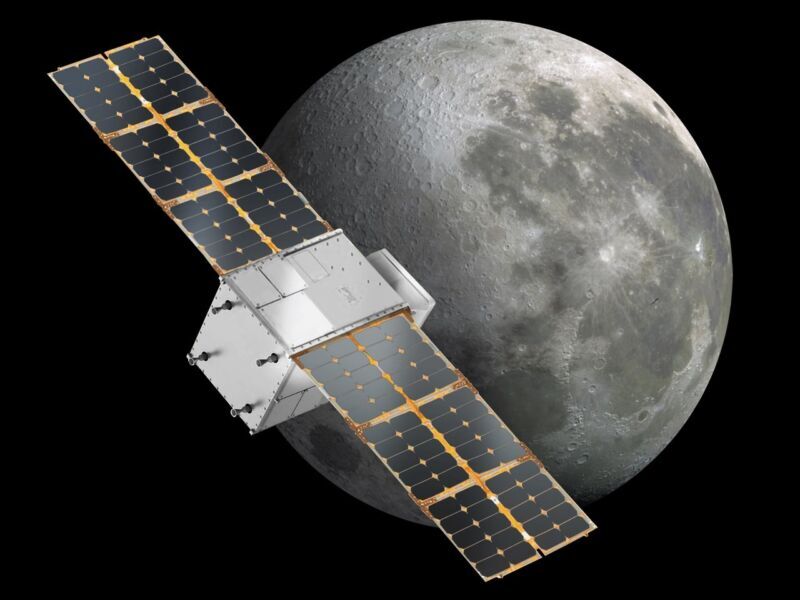
A graphic representation of the Cislunar Autonomous Positioning System Technology Operations and Navigation Experiment in orbit near the Moon.
NASA and Rocket Lab are gearing up to fly a novel mission to lunar orbit that in many ways serves as the vanguard of what is to come as the space agency and US companies ramp up exploration and development of the Moon.
The space agency is financially supporting the privately built satellite, named CAPSTONE, with a $13.7 million grant. It is scheduled to launch on an Electron rocket as early as Saturday from New Zealand. Developed by a Colorado-based company named Advanced Space, with help from Terran Orbital, the spacecraft itself is modestly sized, just a 12U cubesat with a mass of around 25 kg. It could fit comfortably inside a mini-refrigerator.
The mission's scientific aims are also modest—primarily, the demonstration of a new system of autonomous navigation around and near the Moon. This Cislunar Autonomous Positioning System, or CAPS, is important because there is a lack of fixed tracking assets near the Moon, especially as the cislunar environment becomes more crowded during the coming decade.
Nevertheless, NASA views this as a pivotal interplanetary mission for a number of reasons.
In an interview, a senior engineer in NASA's Space Technology Mission Directorate, Chris Baker, said the space agency is interested in this kind of technology as it makes plans to help manage growing traffic near the Moon, including its own Artemis missions and commercial spacecraft delivering NASA science payloads to the Moon's surface.
The CAPSTONE mission will also benefit NASA in another way. It will fly in a special orbit, called a near-rectilinear halo orbit, around the Moon. This is a highly elliptical orbit that periodically comes to within about 3,000 km of the Moon and travels as far away as 70,000 km. In that sense, it's a weird orbit, but because it is neatly balanced between the gravity of Earth and the Moon, the orbit is highly stable and requires only a small amount of spacecraft propellant to hold position.
Later this decade, NASA intends to start assembling a small space station, called the Lunar Gateway, in this elliptical orbit. The Gateway is intended to serve several purposes, including providing a way station for astronauts traveling down to the surface of the Moon. The CAPSTONE mission will be the first spacecraft to test out the parameters of this orbit and verify the stability of the orbit as predicted in simulations.
"The mathematical models are really good," Baker said. "There's not any concern that we're going to learn anything to affect it. This is really more about refining our understanding, looking at station-keeping Delta-v to ground those models with real flight data and optimize operations."
The CAPSTONE mission is a pathfinder in other ways that could prove important as exploration of the Earth-Moon system broadens beyond traditional space agencies. It may help uncover ways to cut the costs of reaching the Moon, a significant barrier to commercial activity.
Notably, this will be the first interplanetary mission launched by a small, liquid-fueled rocket, the Electron vehicle. The launch company, Rocket Lab, has built an interplanetary third stage called Lunar Photon that will separate from the rocket about 20 minutes after liftoff. Six days later, after raising CAPSTONE's orbit to 60,000 km, the Photon stage will make a final burn and boost CAPSTONE into deep space.
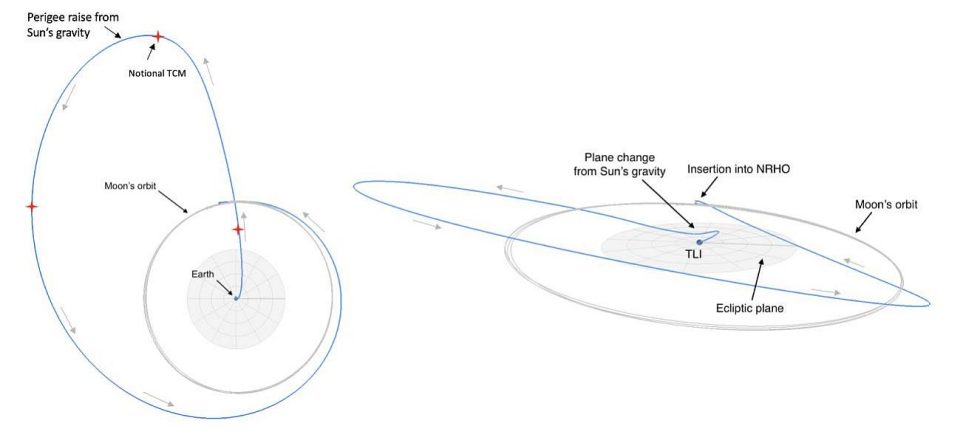
Then the spacecraft will spend nearly four months traveling to the Moon, following what's known as a ballistic lunar transfer that uses the Sun's gravity to follow an expansive trajectory. While this path will bring the spacecraft to a distance of more than three times that between the Earth and Moon, it will require the small vehicle to burn relatively little propellant to reach its destination.
"One of the things that makes this mission particularly attractive to us is the capabilities it is demonstrating, and the US small businesses and commercial capabilities that it's leveraging," Baker said. "It's demonstrating access to the Moon for a small spacecraft on a small rocket. It's really pushing the envelope as a commercially owned spacecraft operating at the Moon and helping to blaze a trail that others can follow."
Quelle: arsTechnica
----
Update: 25.06.2022
.
NASA Sets Live Launch Coverage for CAPSTONE Mission to Moon
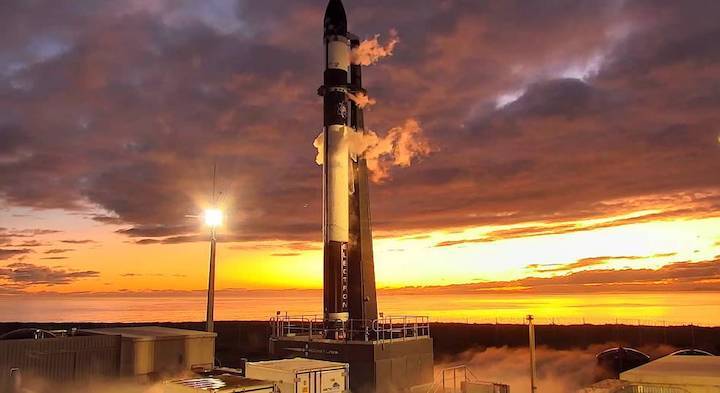
NASA will air live launch coverage of the agency’s Cislunar Autonomous Positioning System Technology Operations and Navigation Experiment (CAPSTONE), the first spacecraft to fly a specific unique lunar orbit ahead of future missions with crew.
CAPSTONE is targeted to launch no earlier than Monday, June 27, aboard a Rocket Lab Electron rocket from the company's Launch Complex 1 in Mahia, New Zealand. The instantaneous launch opportunity is at 6 a.m. EDT (10:00 UTC). Live coverage will begin at 5 a.m. on NASA Television, the agency's website, and the NASA app.
The destination for this microwave oven-size CubeSat is a near rectilinear halo orbit (NRHO). That same orbit is planned for Gateway, a multipurpose outpost for long-term lunar missions as part of the agency’s Artemis program.
Six days after launch, the Photon upper stage will release CAPSTONE into space for the first portion of the spacecraft’s solo flight. After a four-month journey to the Moon, CAPSTONE will test the dynamics of the NRHO for at least six months, helping reduce risk for future spacecraft. CAPSTONE will also demonstrate innovative spacecraft-to-spacecraft navigation technology and one-way ranging capabilities that could help future spacecraft fly near the Moon with reduced need for communication with Earth.
Join Virtual NASA Social
Members of the public are invited to join the virtual NASA Social to get a behind-the scenes look at CAPSTONE, learn what makes CAPSTONE unique among NASA’s missions, meet the rocket launching CAPSTONE, and more.
Visualize CAPSTONE’s Flight in Real Time
You can follow CAPSTONE’s journey live using NASA’s Eyes on the Solar System interactive real-time 3D data visualization. Starting about one week after launch, you can virtually ride along with the CubeSat with a simulated solar system view. NASA will post updates in the visualization on the agency’s Ames Research Center home page as well as Twitter and Facebook.
CAPSTONE is commercially owned and operated by Advanced Space in Westminster, Colorado, on behalf of NASA. It represents an innovative collaboration between NASA and industry to provide rapid results and feedback to inform future exploration and science missions. Tyvak Nano-Satellite Systems, a Terran Orbital Corporation, of Irvine, California, built the spacecraft. The mission also includes contributions from Stellar Exploration Inc., Space Dynamics Lab, Tethers Unlimited Inc., and Orion Space Systems.
NASA’s Small Spacecraft Technology program within the agency’s Space Technology Mission Directorate (STMD) funds the demonstration mission. The program is based at NASA’s Ames Research Center in California’s Silicon Valley. The development of CAPSTONE’s navigation technology is supported by NASA’s Small Business Innovation Research and Small Business Technology Transfer (SBIR/STTR) program, also within STMD. The Artemis Campaign Development Division within NASA’s Exploration Systems Development Mission Directorate funds the launch and supports mission operations. The Launch Services Program at NASA’s Kennedy Space Center in Florida manages the launch service. NASA’s Jet Propulsion Laboratory in Southern California supports the communication, tracking, and telemetry downlink via NASA’s Deep Space Network, Iris radio design, and groundbreaking one-way navigation algorithms.
Quelle: NASA
----
Update: 26.06.2022
.
Terran Orbital Integrates CAPSTONE Aboard Rocket Lab Electron Rocket
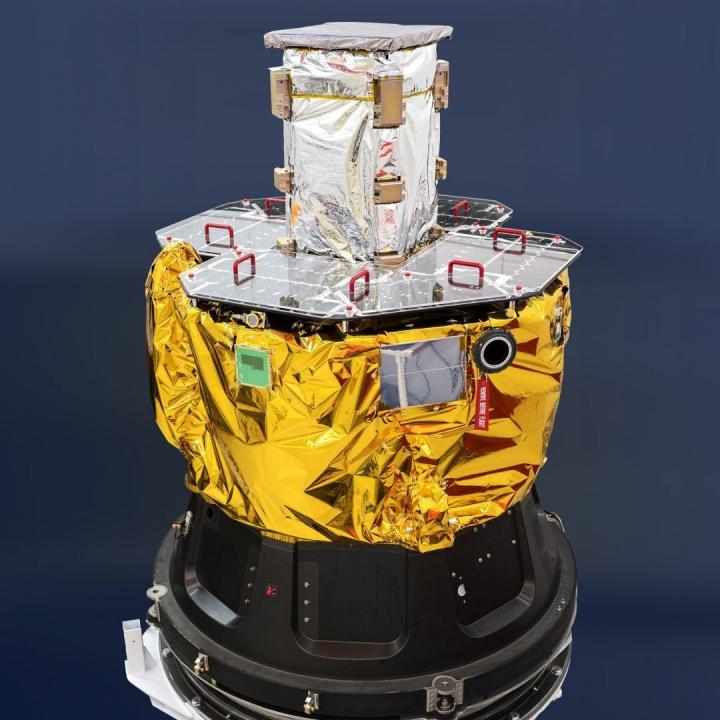
The Terran Orbital designed and built satellite is flying a trailblazing path to the moon in support of NASA’s historic Artemis program
BOCA RATON, Fla., June 24, 2022 – Terran Orbital Corporation (NYSE: LLAP), a global leader in satellite solutions, primarily serving the United States and Allied aerospace and defense industries, today announced the successful integration of the CAPSTONE spacecraft aboard the Rocket Lab Electron rocket. The Terran Orbital designed and built satellite is flying a pathfinding mission to the moon in support of NASA’s historic Artemis program. The Terran Orbital team produced CAPSTONE’s hardware, assembled and tested the spacecraft, and integrated the satellite for its upcoming launch. The launch will take place from Rocket Lab Launch Complex 1 on New Zealand’s Mahia Peninsula as early as 10:00 a.m. UTC / 6:00 a.m. EDT / 3:00 a.m. PDT on June 27, 2022. CAPSTONE is owned and operated by Advanced Space on behalf of NASA.
The Cislunar Autonomous Positioning System Technology Operations and Navigation Experiment (CAPSTONE) will be the first spacecraft to test the Near Rectilinear Halo Orbit (NRHO) around the Moon. CAPSTONE includes a radio tower on top that extends its size from a traditional 12U form factor. Rather than follow the typical direct to Moon path, CAPSTONE will follow a “ballistic lunar transfer” that will extend its reach up to 1.5 million kilometers before returning into lunar orbit – saving propellant and enabling the spacecraft to complete a mission that was previously impossible for a spacecraft of its size.
“CAPSTONE is an enormous achievement for small spacecraft exploration,” said Terran Orbital Co-Founder, Chairman, and Chief Executive Officer Marc Bell. “Working alongside NASA, Rocket Lab, and Advanced Space has been a privilege. Terran Orbital is proud to have built, designed, and integrated the spacecraft for this historic mission and we look forward to running spacecraft operations throughout CAPSTONE’s journey.”
“CAPSTONE is a great example of how NASA and industry working together makes
ambitious exploration possible,” said NASA Space Technology Mission
Directorate Associate Administrator Jim Reuter. “It’s incredibly exciting to
see this trailblazing small satellite start its journey to the Moon.”
“The CAPSTONE mission is a testament to the power of collaboration, technological innovation, and perseverance,” said Advanced Space Chief Executive Officer and CAPSTONE Principal Investigator Bradley Cheetham. “The industry and NASA team delivered a mission that will enable the sustainable exploration, development, and settlement of space. Leading this historic mission for NASA has been an honor. Our teams are focused on the next phase of the launch and ultimately the spacecraft separation in 6 days. From this point our small spacecraft will fly itself to the Moon, leading the way for future missions.”
“Going to the Moon is a team effort and we have phenomenal mission partners in Terran Orbital, Advanced Space, and NASA,” said Rocket Lab Founder and Chief Executive Officer Peter Beck. “Together, we’re bringing missions beyond low Earth orbit within reach and paving a new path to the Moon.”
The launch will be broadcast live from approximately 45 minutes prior to lift-off at www.nasa.gov/live.
Quelle: TerranOrbital
----
Update: 29.06.2022
-
CAPSTONE Launches to Test New Orbit for NASA’s Artemis Moon Missions
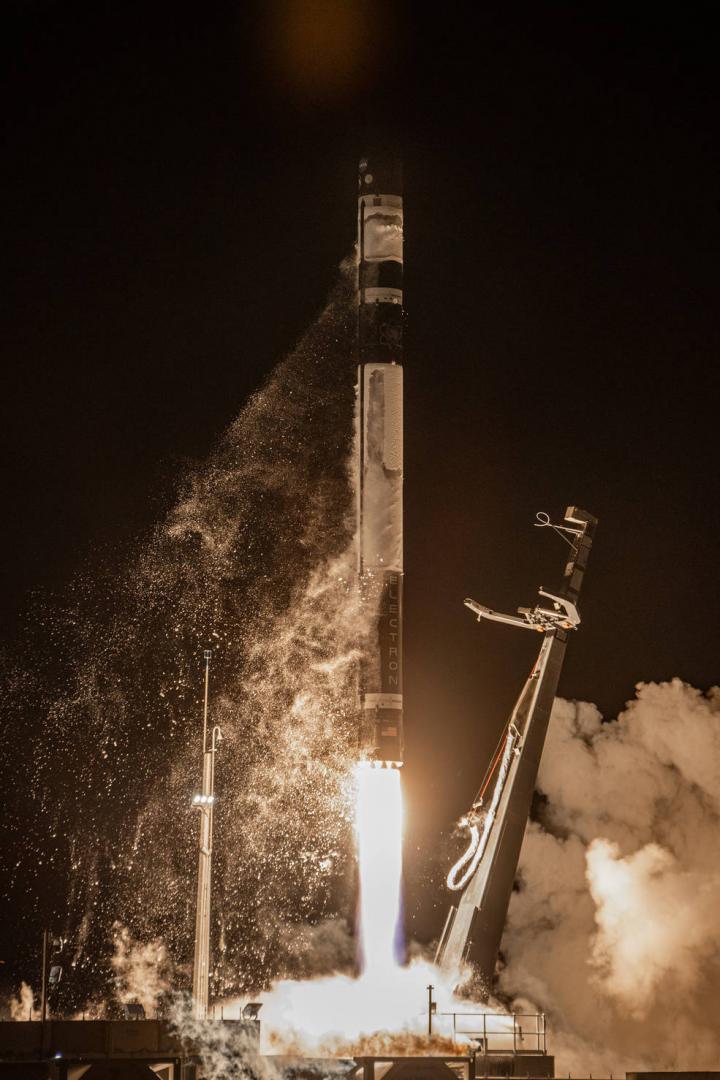
NASA’s CubeSat designed to test a unique lunar orbit is safely in space and on the first leg of its journey to the Moon. The spacecraft is heading toward an orbit intended in the future for Gateway, a lunar space station built by the agency and its commercial and international partners that will support NASA’s Artemis program, including astronaut missions.
The Cislunar Autonomous Positioning System Technology Operations and Navigation Experiment, or CAPSTONE, mission launched at 5:55 a.m. EDT (09:55 UTC) on Rocket Lab’s Electron rocket from the Rocket Lab Launch Complex 1 on the Mahia Peninsula of New Zealand Tuesday.
"CAPSTONE is an example of how working with commercial partners is key for NASA's ambitious plans to explore the Moon and beyond," said Jim Reuter, associate administrator for the Space Technology Mission Directorate. "We're thrilled with a successful start to the mission and looking forward to what CAPSTONE will do once it arrives at the Moon."
CAPSTONE is currently in low-Earth orbit, and it will take the spacecraft about four months to reach its targeted lunar orbit. NASA invites the public to follow the spacecraft’s journey live using NASA’s Eyes on the Solar System interactive real-time 3D data visualization. Starting about one week after launch, virtually ride along with the CubeSat with a simulated view of our solar system. NASA will post updates about when to see CAPSTONE in the visualization on NASA's Ames Research Center's home page as well as Twitter and Facebook.
CAPSTONE is attached to Rocket Lab’s Lunar Photon, an interplanetary third stage that will send CAPSTONE on its way to deep space. Shortly after launch, Lunar Photon separated from Electron’s second stage. Over the next six days, Photon’s engine will periodically ignite to accelerate it beyond low-Earth orbit, where Photon will release the CubeSat on a ballistic lunar transfer trajectory to the Moon. CAPSTONE will then use its own propulsion and the Sun’s gravity to navigate the rest of the way to the Moon. The gravity-driven track will dramatically reduce the amount of fuel the CubeSat needs to get to the Moon.
"Delivering the spacecraft for launch was an accomplishment for the entire mission team, including NASA and our industry partners. Our team is now preparing for separation and initial acquisition for the spacecraft in six days," said Bradley Cheetham, principal investigator for CAPSTONE and chief executive officer of Advanced Space, which owns and operates CAPSTONE on behalf of NASA. “We have already learned a tremendous amount getting to this point, and we are passionate about the importance of returning humans to the Moon, this time to stay!"
At the Moon, CAPSTONE will enter an elongated orbit called a near rectilinear halo orbit, or NRHO. Once in the NRHO, CAPSTONE will fly within 1,000 miles of the Moon’s North Pole on its near pass and 43,500 miles from the South Pole at its farthest. It will repeat the cycle every six and a half days and maintain this orbit for at least six months to study dynamics.
“CAPSTONE is a pathfinder in many ways, and it will demonstrate several technology capabilities during its mission timeframe while navigating a never-before-flown orbit around the Moon,” said Elwood Agasid, project manager for CAPSTONE at NASA's Ames Research Center in California's Silicon Valley. “CAPSTONE is laying a foundation for Artemis, Gateway, and commercial support for future lunar operations.”
During its mission, CAPSTONE will provide data about operating in an NRHO and showcase key technologies. The mission's Cislunar Autonomous Positioning System, developed by Advanced Space with support from NASA's Small Business Innovation Research program, is a spacecraft-to-spacecraft navigation and communications system that will work with NASA’s Lunar Reconnaissance Orbiter to determine the distance between the two lunar orbiting spacecraft. This technology could allow future spacecraft to determine their position in space without relying exclusively on tracking from Earth. CAPSTONE also carries a new precision one-way ranging capability built into its radio that could reduce the amount of ground network time needed for in-space operations.
In addition to New Zealand hosting CAPSTONE's launch, New Zealand's Ministry of Business, Innovation and Employment and a University of Canterbury-led team are collaborating with NASA on a research effort to track Moon-orbiting spacecraft. New Zealand helped develop the Artemis Accords – which establish a practical set of principles to guide space exploration cooperation among nations participating in NASA’s 21st century lunar exploration plans. In May 2021, New Zealand was the 11th country to sign the Artemis Accords.
The microwave-oven sized CubeSat was designed and built by Tyvak Nano-Satellite Systems, a Terran Orbital Corporation. CAPSTONE includes contributions from Stellar Exploration, Inc., Space Dynamics Lab, Tethers Unlimited, Inc., and Orion Space Systems. NASA’s Small Spacecraft Technology program within the agency’s Space Technology Mission Directorate (STMD) funds the demonstration mission. The program is based at NASA’s Ames Research Center in California’s Silicon Valley. The development of CAPSTONE’s navigation technology is supported by NASA’s Small Business Innovation Research and Small Business Technology Transfer (SBIR/STTR) program, also within STMD. The Artemis Campaign Development Division within NASA’s Exploration Systems Development Mission Directorate funds the launch and supports mission operations. The Launch Services Program at NASA’s Kennedy Space Center in Florida manages the launch service. NASA’s Jet Propulsion Laboratory supports the communication, tracking, and telemetry downlink via NASA’s Deep Space Network, Iris radio design, and groundbreaking 1-way navigation algorithms.
Quelle: NASA
+++
CAPSTONE lifts off for lunar orbit to blaze path for NASA Gateway
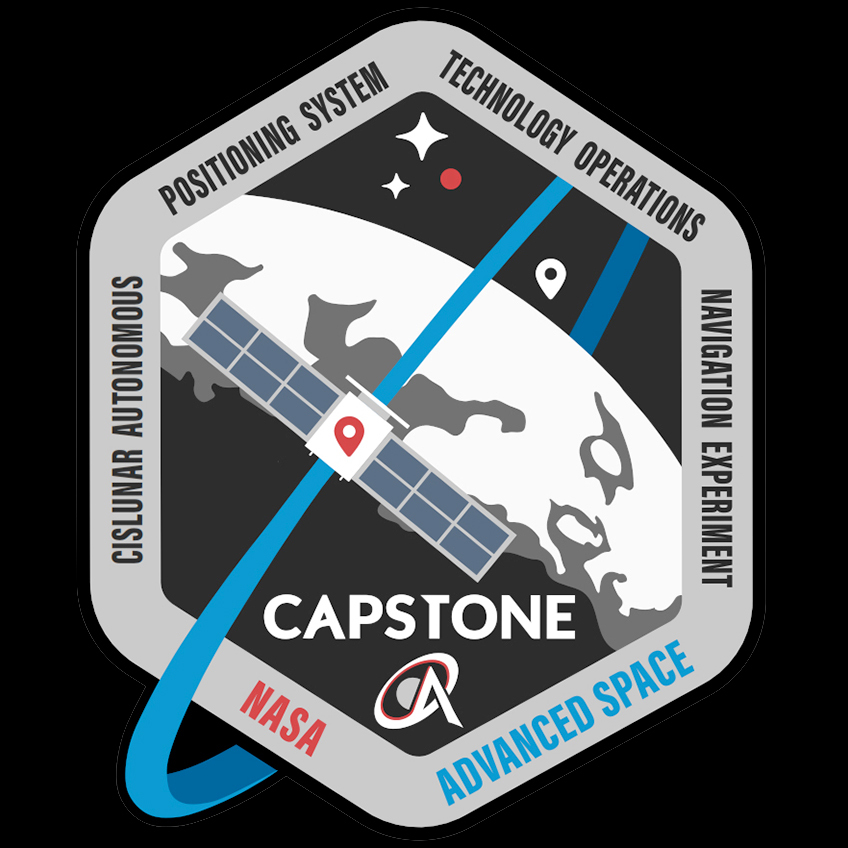
A small private spacecraft is now on its way to the moon to test new technologies and pave the way for a NASA human-tended space station to be deployed into a special lunar orbit.
CAPSTONE, or Cislunar Autonomous Positioning System Technology Operations and Navigation Experiment, lifted off early Tuesday morning (June 28) on a four-and-a-half month journey to enter a near rectilinear halo orbit (NRHO) around the moon. The same orbit will be used by Gateway, NASA's planned lunar platform from which Artemis missions will be able to reach any site on the moon's surface, including landings at the lunar south pole.
"We view the CAPSTONE mission as a valuable precursor, not just for Gateway, but also for [the crewed spacecraft] Orion and the human landing system in the larger architecture," Nujoud Merancy, chief of the exploration mission planning office at NASA's Johnson Space Center in Houston, said in a pre-launch briefing. "Artemis teams for Gateway and Orion will use the data from CAPSTONE to validate our models, which will be important for operations and planning for future missions."
Designed and built by Tyvak Nano-Satellite Systems, a subsidiary of Terran Orbital, and owned and operated by Advanced Space, the CAPSTONE cubesat was launched atop an Electron two-stage booster from Rocket Lab's Launch Complex 1 (LC-1) on the Mahia Peninsula of New Zealand at 5:55 a.m. EDT (0955 GMT or 9:55 p.m. local time). Nine minutes later, CAPSTONE separated from Electron's upper stage into Earth orbit.
At 6:05 a.m. EDT (1005 GMT), Rocket Lab's Photon spacecraft bus fired its HyperCurie engine for the first of six planned burns that over the next five days will raise CAPSTONE's altitude. A final burn on Sunday (July 3) will set the satellite on its course for the moon.
Unlike the Apollo lunar missions, which took a free return trajectory to the moon, Photon's fuel-efficient ballistic lunar transfer will take advantage of the gravitational pull from the Sun, making it possible to send CAPSTONE into a distant lunar orbit using a small launch vehicle. The 55-pound (25-kg), microwave-size cubesat will reach the moon on Nov. 13.
"It's a much more efficient transfer in terms of fuel usage, but it trades efficiency for time," Chris Baker, NASA's program executive for small spacecraft technology, told reporters.
A near rectilinear halo orbit is a significantly elongated path located at a balance point between the gravities of Earth and the moon. The orbit provides stability for long-term missions like Gateway and requires minimal energy to maintain.
CAPSTONE's orbit will bring it within 1,000 miles (1,600 km) of one lunar pole on its near pass and 43,500 miles (70,000 miles) from the other pole at its peak every seven days. The same orbit will enable spacecraft flying to and from Gateway and the moon's surface to require require less propulsion capability than is needed in other circular lunar trajectories.
"So it has the benefit of the low energy to get into and out of, but you are then riding this balance point between the gravitational pull of Earth and gravitational pull of the moon," said Baker. "And that's where it gets into this kind of complexity, making sure we know how much energy it is going to take to stay in that balance point. We're getting that kind of operational experience before we go and do that with Gateway."
CAPSTONE will circle the moon for at least six months, validating the power and propulsion requirements for maintaining its specific orbit. Another benefit of NRHO is that the satellite will never be out of sight of Earth.
"One of the key things of the specific operational NRHO we will be flying is that this is an eclipse-free NRHO. It was designed to avoid eclipses from Earth, which is a very important consideration," said Brad Cheetham, Advanced Space's CEO and principal investigator for the CAPSTONE mission. "This unique orbit is always in view of Earth, so we are never behind the moon as you look from Earth [and] we're never flying through the shadow of Earth."
"This is the same approach that Gateway is taking, In fact, we have designed all of our CAPSTONE mission operations around the orbit that is planned for Gateway," Cheetham said.
In addition to testing NASA's models for NRHO, CAPSTONE will also demonstrate a new approach to spacecraft-to-spacecraft navigation, as well as capabilities to communicate with Earth. Using NASA's Lunar Reconnaissance Orbiter (LRO) as a reference point, CAPSTONE will employ a dedicated flight computer and radio to determine where it is in its orbital path.
CAPSTONE will communicate directly with LRO and utilize the data obtained from this crosslink to measure how far the two spacecraft are apart and how fast the distance between the two is changing, which in turn will be used to determine CAPSTONE's position in space. If successful, this software, referred to by the first half of the mission's name — Cislunar Autonomous Positioning System, or CAPS — will enable future spacecraft to determine their location without having to rely on tracking from Earth.
CAPSTONE will be the first spacecraft to enter an NRHO around the moon and only the third mission to test a multi-body orbit. Previously, NASA's ARTEMIS (Acceleration, Reconnection, Turbulence and Electrodynamics of the Moon's Interaction with the Sun) probes (not to be confused with the Artemis program) and China's communication relay satellite, Queqiao, entered multi-body orbits.
CAPSTONE's launch is the first to use Rocket Lab's Electron booster and Photon bus to reach the moon, although it is not the first small rocket to send a satellite or probe on an interplanetary mission. NASA's Lunar Prospector reached the moon flying atop a Lockheed Martin Athena II in 1998.
Quelle: CS

